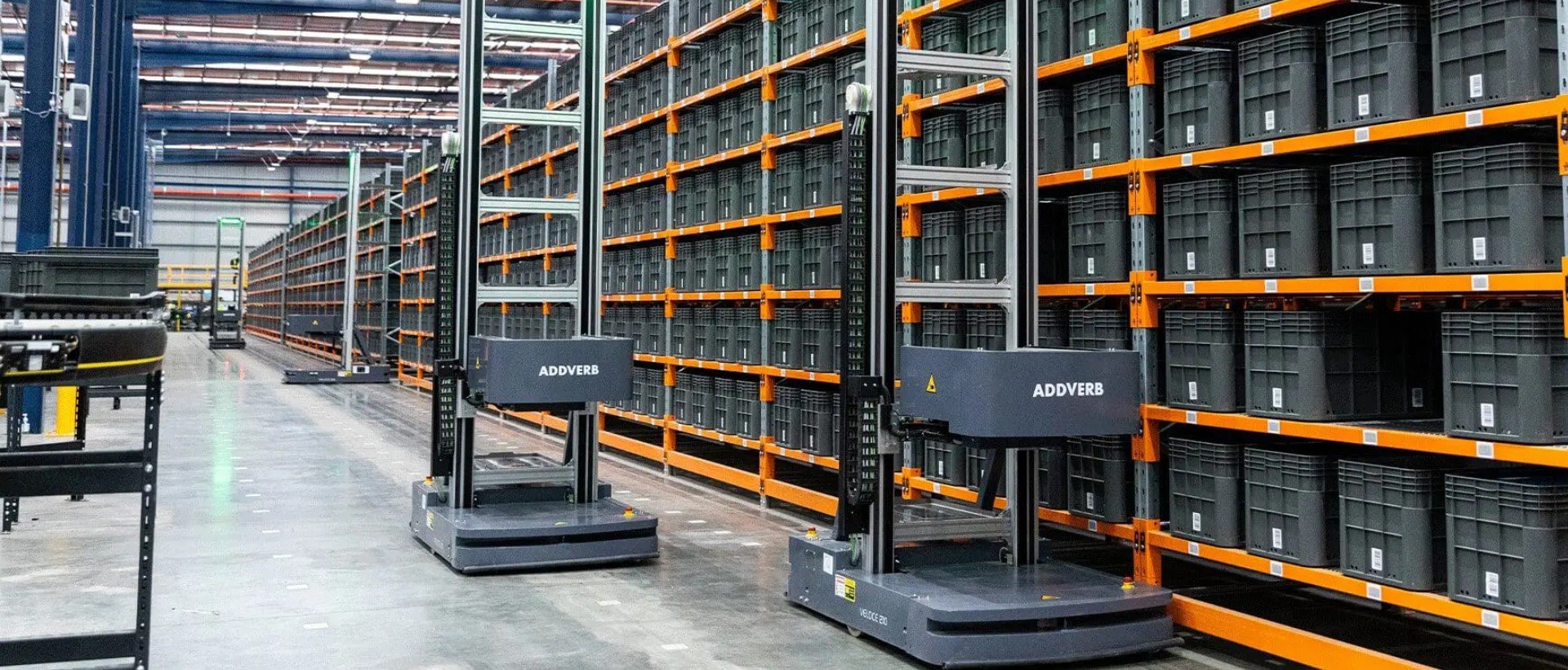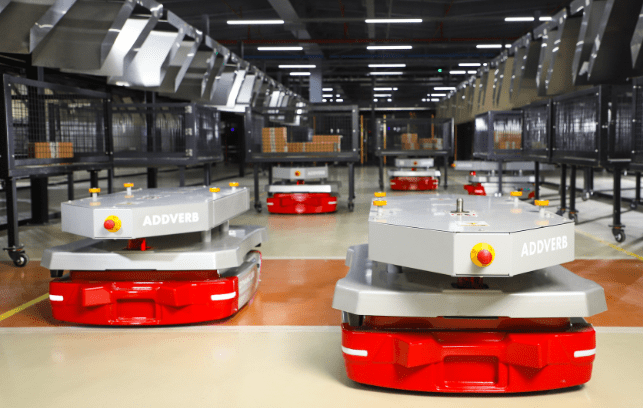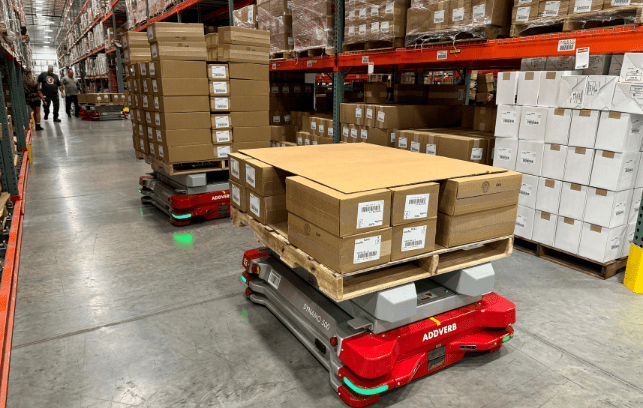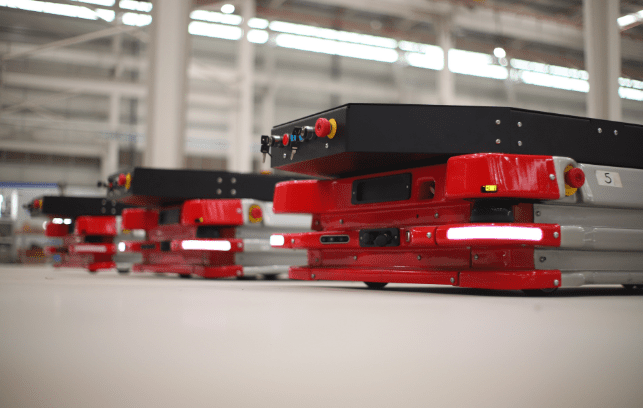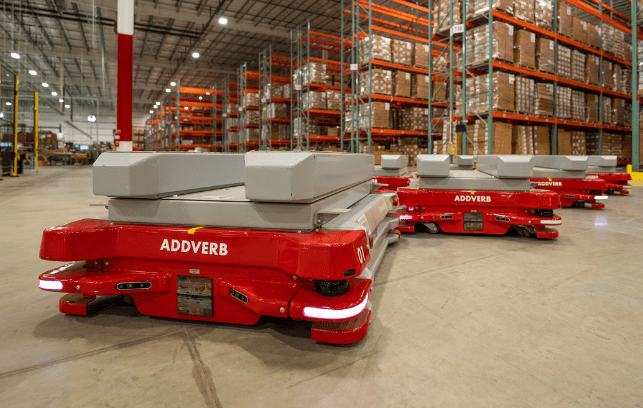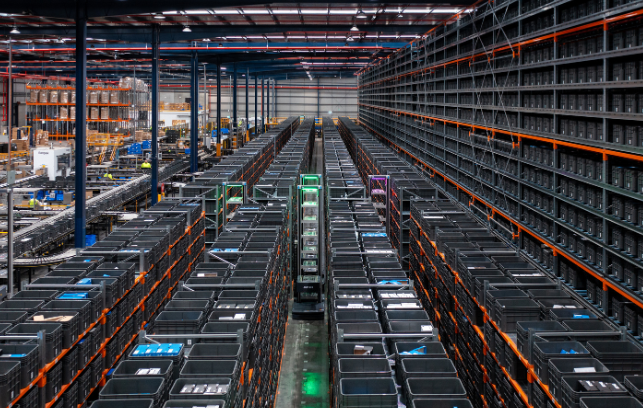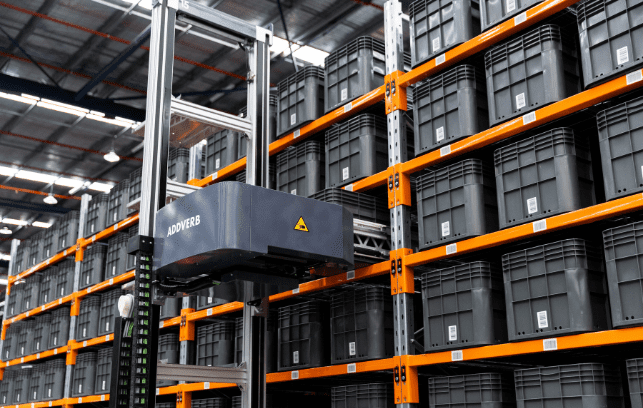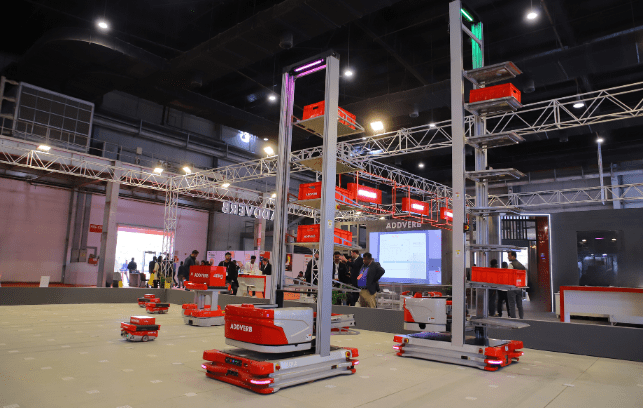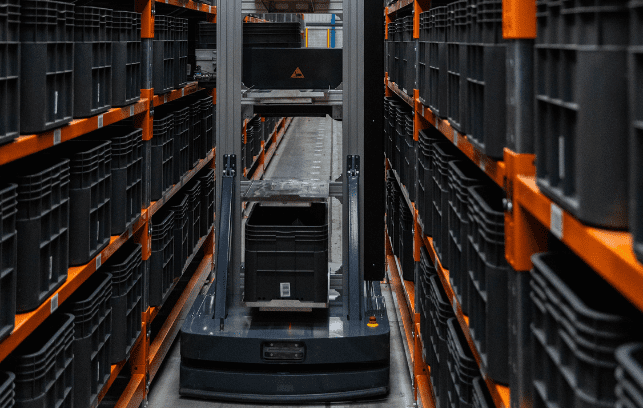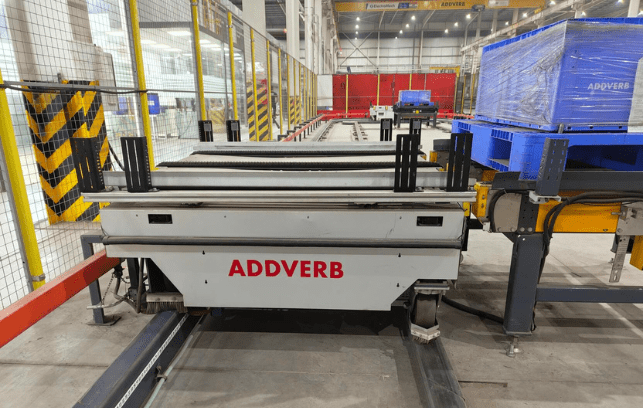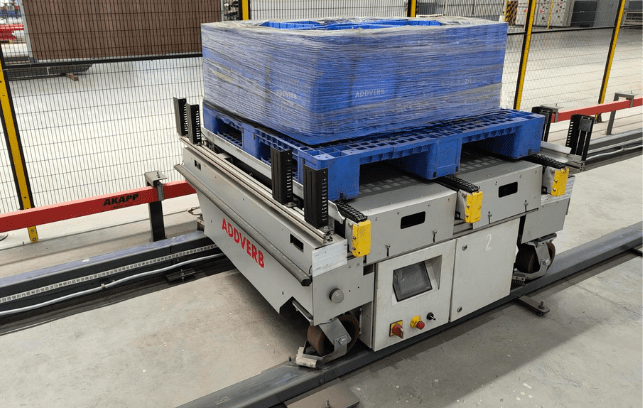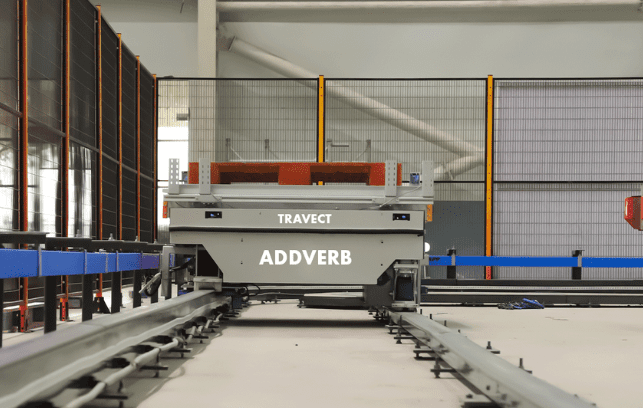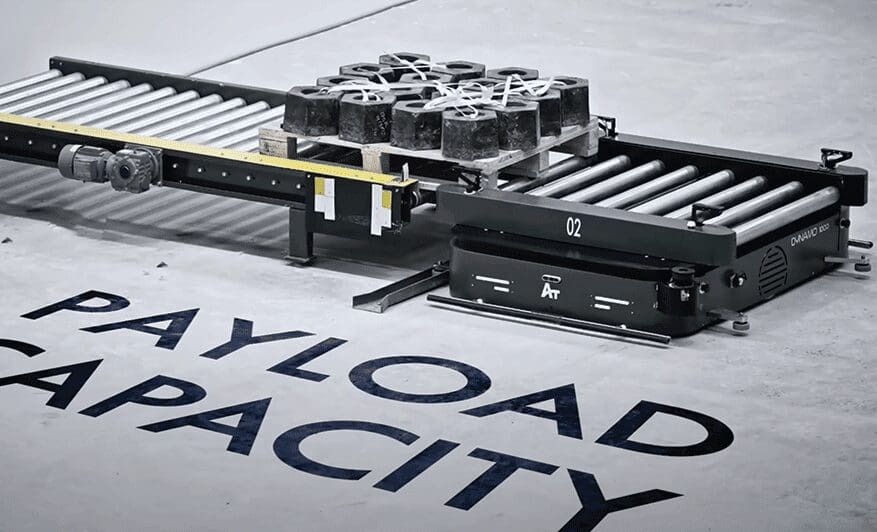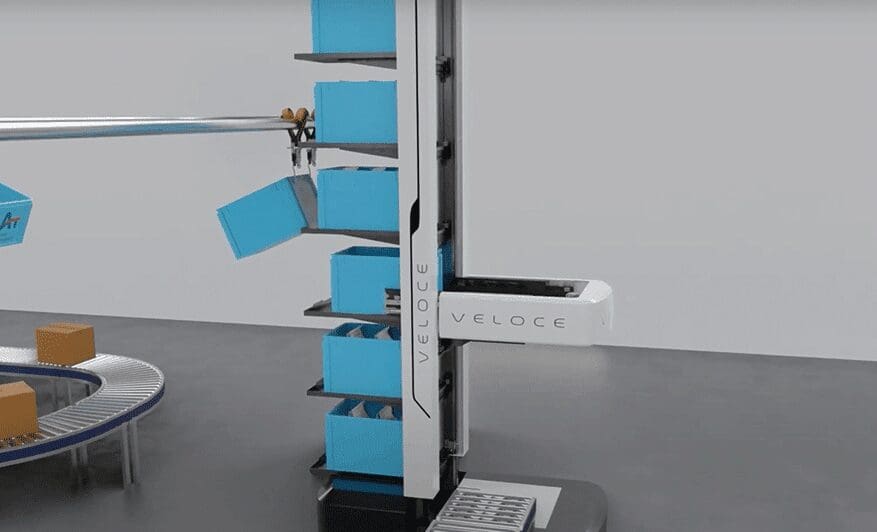Effortless Navigation for Seamless Workflow
Transforming movement with Dynamo, Automated mobile robot inside your facility.
Explore the capabilities of our Autonomous Mobile Robot! It boasts a robust 1500 Kg payload, impressive 1.5 m/s speed, smooth 0.2 m/s² acceleration, LiDAR-based navigation, SLAM algorithm, and natural roaming with real-time scheduling.
Revolutionising Material movement and Storage Operations and Ensuring Superior Performance with Veloce
Unleash the power of Veloce, our Multi-Carton Picking Robot, revolutionising facility operations. With its adaptable design, grid-based navigation, and exceptional accuracy, Veloce optimises space and order fulfillment.
Material Movement made efficient with Addverb's Mobile Robots
Material movement is the basic requirement for warehouses of any size and scale. Our range of Fixed Automation and Flexible Robotics can help transport material in a fast, consistent, and safe way to help increase the productivity and efficiency.


